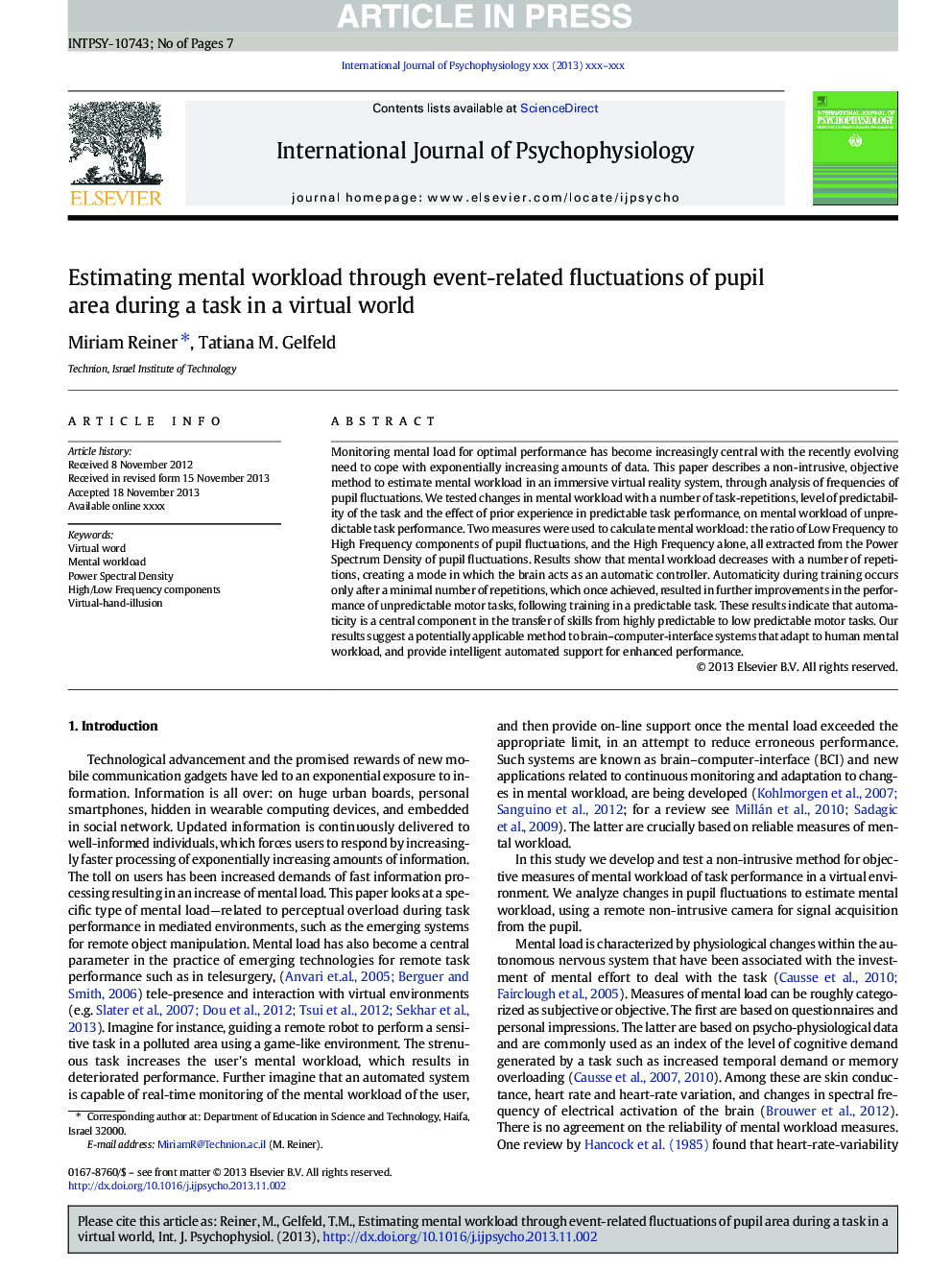| Article ID | Journal | Published Year | Pages | File Type |
|---|---|---|---|---|
| 7295681 | International Journal of Psychophysiology | 2014 | 7 Pages |
Abstract
Monitoring mental load for optimal performance has become increasingly central with the recently evolving need to cope with exponentially increasing amounts of data. This paper describes a non-intrusive, objective method to estimate mental workload in an immersive virtual reality system, through analysis of frequencies of pupil fluctuations. We tested changes in mental workload with a number of task-repetitions, level of predictability of the task and the effect of prior experience in predictable task performance, on mental workload of unpredictable task performance. Two measures were used to calculate mental workload: the ratio of Low Frequency to High Frequency components of pupil fluctuations, and the High Frequency alone, all extracted from the Power Spectrum Density of pupil fluctuations. Results show that mental workload decreases with a number of repetitions, creating a mode in which the brain acts as an automatic controller. Automaticity during training occurs only after a minimal number of repetitions, which once achieved, resulted in further improvements in the performance of unpredictable motor tasks, following training in a predictable task. These results indicate that automaticity is a central component in the transfer of skills from highly predictable to low predictable motor tasks. Our results suggest a potentially applicable method to brain-computer-interface systems that adapt to human mental workload, and provide intelligent automated support for enhanced performance.
Related Topics
Life Sciences
Neuroscience
Behavioral Neuroscience
Authors
Miriam Reiner, Tatiana M. Gelfeld,
